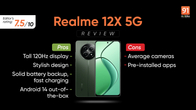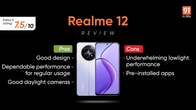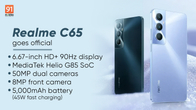Review Summary
Expert Rating
Realme has just dropped the new Narzo 30 series in the Indian market and like its previous phones, the company is aiming to shake up the budget segment. There are two devices in the lineup for now, namely the Narzo 30 Pro and the Narzo 30A, of which the latter falls in the budget space. The former OPPO sub-brand has been disrupting the sub-Rs 20,000 segment since last year and the Narzo 30 Pro appears to follow on the same lines. Having to contend with some of Realme’s own devices in the bracket such as the Realme 7 series and the Realme X7 (review), the Narzo 30 Pro also goes head-on with the POCO X3 (review) and the Redmi Note 9 Pro Max. I have covered a benchmarking and gaming comparison between the three devices and you can read it here. Basically, the Narzo 30 Pro dominates all aspects of the performance, thanks to the latest MediaTek Dimensity 800U SoC powering it. In addition to that, the phone, priced starting Rs 16,999, is also the cheapest 5G-enabled phone you can find in the Indian market. The significance of that along with Narzo 30 Pro’s capability of delivering in other segments of the smartphone experience will only be revealed through a full review. Let’s dive straight into that.
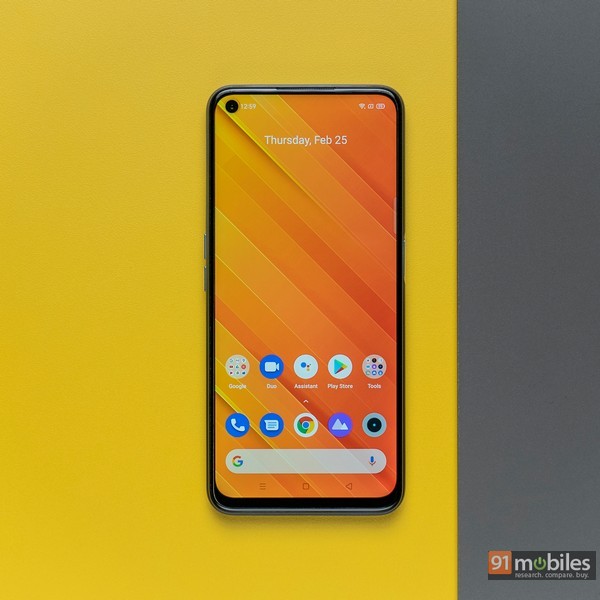
Table of Contents
Verdict
The Realme Narzo 30 Pro is an all-rounder and is definitely at the top of my recommendations list. It can push through any task without breaking a sweat, packs in a capable 120Hz panel, decent cameras, and a battery that runs through the entire day. The icing on the cake is the phone’s 5G capabilities which will definitely come in use soon as telecom giants start charting out a rollout roadmap.

The lowdown
Realme has upped its design game over the last couple of smartphones but that goodness doesn’t seem to have passed down to the Narzo 30 Pro. Don’t get me wrong, the phone is as robust and sturdy as you can expect from a Realme device. However, when put against the fabulous-looking POCO X3 or the exceptional Redmi Note 9 Pro Max, the Narzo 30 Pro does leave a little something to be desired. That being said, the plain Blade Silver colour variant does have a matte-like finish to it and the slightly narrow frame makes it comfortable to hold in my palm. The phone is reasonably thick but doesn’t weigh as much as I had expected, given the 5,000mAh battery housed inside. On the left is a power button with a textured look, and that also hides a capacitive fingerprint reader. This pushes the volume rocker key to the right and in a position of easy reachability by my index finger. The usual USB-C, 3.5mm jack and speaker grille combo is present at the bottom while the triple-camera setup is in a rectangular housing that is positioned vertically on the back.

On the front of the device is a 6.5-inch IPS LCD panel with FHD+ (2,400×1,080) resolution and a 20:9 aspect ratio. As for the selfie shooter, it is present in the rather big punch-hole cutout on the top right with some amount of backlight bleeding around it. Apart from that, the bezels around the phone are slightly bigger than what I would’ve liked, but in the overall scheme of things, that shouldn’t hamper the viewing experience. The highlight of the phone is the 120Hz refresh rate panel which was available only on the POCO X3 till now in this price range. There are some frame drops evident while swiping down in the app drawer and a bit of a jittery scrolling visible occasionally on YouTube, but apart from that, you get your money’s worth. It is hard to overstate the smoothness of a 120Hz panel and that is something you have to experience. Overall the display is quite contrasty during the bootup process but you can opt for a slightly less saturated colour profile in the settings menu. There is WideVine L1 support for HD content on OTT platforms but nothing in the way of HDR. At 600nits of screen brightness, the display also is very much legible under sunny conditions.
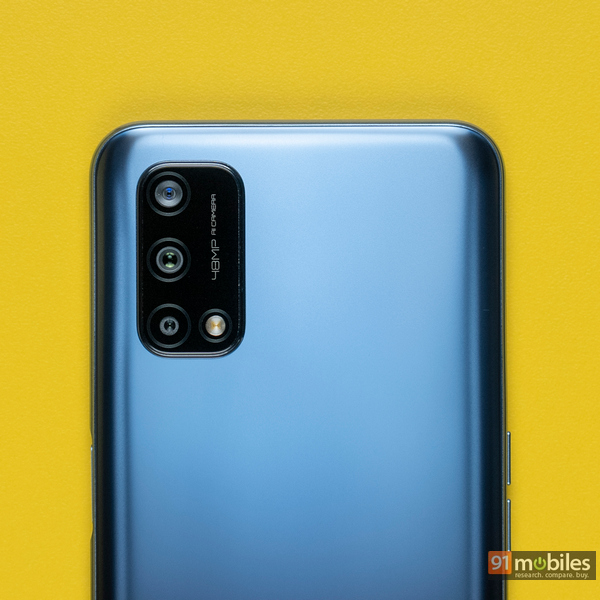
The optics on the Narzo 30 Pro consist of a main 48MP shooter with a large f/1.8 aperture, which is supported by an ultra-wide sensor of 8MP resolution along with a 2MP macro shooter. It seems to be a combination of sensors used on earlier Realme smartphones, although most of the devices in the category have transitioned to 64MP shooters. In any case, I quite like the punchy tones and slightly oversaturated colour science that Realme has adopted for the Narzo 30 Pro. The photos are quite crisp with a lot of details when captured in good lighting. The dynamic range is a bit iffy and the sensor does struggle with bringing out the blue in the sky when the sun is shining brightly. A separate 48MP mode is present if you are looking to zoom in for additional details but it comes at the cost of poor exposure handling.

The ultra-wide sensor has a 119-degree field of view which brings a lot in the frame and I was quite satisfied with how the colour temperatures were kept under control. You do lose a slight amount of detailing around the edges of the frame. The macro shooter clicks decent pictures but only at a focal length of 4cm, and the detailing can be off if your hand shakes even slightly. Just like a couple of Realme phones before, the problem of low-light photography not being great does plague the Narzo 30 Pro. In extremely dim lighting, the sensor is not capable of bringing out any details although with the assistance of some street light you do get decent highlights and shadows of the subject. Even so, the dedicated Night mode takes a lot of time to click decent shots, and even then all it does is greatly overexpose the frame and slightly reduce the noise. It seems to me that the night mode on the device needs some work via a software patch. On the front is a 16MP selfie shooter which takes splendid selfies with accurate skin tones and low facial oversharpening. The portrait mode on the front works well but only in daylight. You have the usual AI beauty mode, and other face-changing filters standard to Realme phones.
On the performance side of things, you get the Dimensity 800U 5G chipset that is handling operations. The 7nm chipset is quite power efficient and at the same time, offers very good graphics capabilities. You can read my comparison article about the benchmarking and gaming comparisons I ran on the Narzo 30 Pro here. Basically the device is buttery smooth, a quality that is certainly amplified by the 120Hz display. Even heavy apps open in a flash and the memory management along with 8GB RAM (on my device) allows them to remain open in the background for a long time. Medium-level tasks like switching between Chrome tabs or apps while a secondary activity runs in the background such as navigation on Google Maps can be achieved with ease.

Even tasks like heavy-duty gaming don’t stress out the GPU, allowing you to run nearly the highest settings on games like Call of Duty Mobile. I was able to maintain a smooth 60fps for most of the gameplay session, while the graphics rendered in real-time were quite detailed. Other aspects of the phone include a fast and responsive fingerprint sensor. The Dolby Atmos support does give a certain depth and clarity to the speaker but at max volume, it still crackles. Also, there is Hi-Res audio support for a compatible pair of high-quality wired earphones.

A word also on the phone’s 5G capabilities, which currently will not be utilised but can be considered in the interest of futureproofing. Telecom providers like Jio have made a promise to introduce 5G connectivity sometime this year, but only in very selected regions. Other players like Airtel are also working to roll out 5G. It looks like the chatter around a fullscale 5G roll-out are going to intensify going forward. The existing 4G/LTE connectivity works very well on the Narzo 30 Pro, with no call drops or network irregularities to report on Noida’s Jio telecom circle.

RealmeUI is what you will be getting software-wise on the Narzo 30 Pro, and that is based on Android 10. Having covered the UI in great detail in my earlier review of the Realme X7 Pro (review), you can head there for more details. In summary, bloatware has come down significantly but the icon packs have not been improved. The Settings menu and the drop-down quick options have become more refined and easy to access. The dark theme does go easy on the eye and the Game Boost feature makes mobile gaming smoother. I do think that an update to at least Android 11 should come out soon given that Android 12 is not that far away.

Battery-wise the Realme Narzo 30 Pro packs in a 5,000mAh cell which has support for 30W fast charging. Realme has a couple of power-saving options that will allow you to push the phone’s usage to nearly two days but at limited performance. Regular usage will not kill the phone in a day unless there is some heavy-duty gaming involved. My usage was limited to streaming YouTube and Netflix while browsing my Facebook and Instagram feed. Screen-on time was easily in the 6-hour range even with the 120Hz option turned on for the entire duration. Thanks to the decently fast charging speed you will be able to juice up the whole device in about an hour while 50 percent is done in 25 minutes.
Final Verdict

The Realme Narzo 30 Pro aims to deliver in all the major aspects of a complete smartphone experience. Its fast performance and its handling of heavy graphics load are the key highlights. The photography capabilities of the device are also quite good, with a scope of improvement in the low-light scenarios. Charging speeds are quite fast and the battery capacity itself allows the phone to last for more than a day off a single charge. The software does feel a bit dated, but you can expect security patches at regular intervals. The 120Hz panel makes tasks extremely fluid and lends a touch of smoothness to the interface. Could the punch-hole be slightly smaller? Perhaps. Could the bezels be thinner? Maybe. Even so, the display quality won’t leave you disappointed. Finally, there is the dual-standby 5G capability which should be more useful in the very foreseeable future. In terms of competition, I can only see the POCO X3, which has slightly lower performance but a bigger battery and a better camera system. However, its heavy weight could be off-putting to some users. The Redmi Note 10 series, about to launch soon, is another contender which should provide a worthy challenge but it remains to be seen if the MIUI platform still comes with ads and spammy notofications. As of now, the Narzo 30 Pro looks like a great choice, thanks to its smooth performance and a stellar display.
Editor’s rating: 4 / 5
Pros:
- Excellent 120Hz panel
- Smooth performance
- Good battery life
- 5G capability
Cons:
- Still runs Android 10
- Boring design
- Low-light photography needs improvement
 realme Narzo 30 Pro realme Narzo 30 Pro | vs |  POCO X3 POCO X3 |
 realme Narzo 30 Pro realme Narzo 30 Pro | vs |  Xiaomi Redmi Note 9 Pro Max Xiaomi Redmi Note 9 Pro Max |























